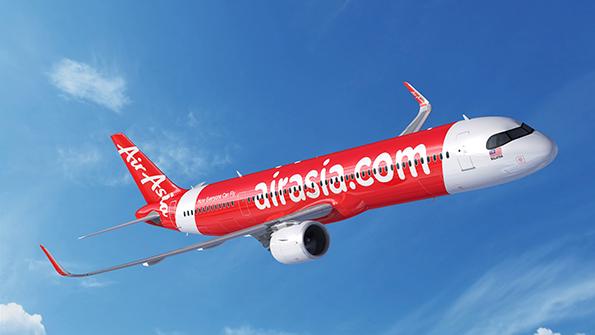
Ask the Editors: The Aviation Week Network invites our readers to submit questions to our editors and analysts. We’ll answer them, and if we can’t we’ll reach out to our wide network of experts for advice.
Do you see the airline industry increasing the use of narrowbody aircraft on long-haul routes?
Jens Flottau, Aviation Week’s executive editor for commercial aviation, answers:
The industry was on the path to using more narrowbodies on long-haul routes before the novel coronavirus pandemic. Airlines such as United and JetBlue had committed to the idea by placing orders for the Airbus A321XLR, and the concept had gained traction in other regions too. In Europe, smaller legacy carriers such as Aer Lingus and TAP Air Portugal saw an opportunity to fly thin, long routes that would not have been viable previously based on using their Airbus A330s or other small widebodies. And AirAsia X has replaced part of its A330neo order with the A321XLR, underlining how thinking among airlines has changed.
Airline entrepreneur David Neeleman appears to be taking the idea one step further. His latest venture, Breeze, has ordered 60 Airbus A220s. Neeleman has been pushing Airbus to release design buffers in the aircraft, increase maximum takeoff weight and range to allow transatlantic flights and service deep into Latin America.
That all happened before COVID-19 decimated airlines. The question now is whether market dynamics will be fundamentally changed as air transport is rebuilt. The trend toward long-haul narrowbodies was primarily supported by the launch of the A321XLR, which will not be available until 2023. However, none of its orders have been canceled. Airlines should be in much better financial shape by then, but the market will be smaller than they had projected before the COVID crisis. The introduction of long-haul narrowbodies is therefore unlikely to be quicker.
There are other ways in which the market is changing. Thousands of nonstop services have been lost in the collapse of the air transport system and have been partly replaced by connections via hubs. It seems likely that hubs will be strengthened, while direct routes between some secondary markets may become too small for even narrowbody service. Hub operators could replace widebodies with aircraft like the XLR on routes with lower demand. But that is likely limited to aircraft that have already been ordered, as hub carriers are unlikely to be able to afford new orders for some time.
Then again, long-term social trends could play in favor of long-haul narrowbodies. There is an increasingly popular view that with the home office now firmly established, some companies will allow their employees to keep working remotely. That could potentially increase air travel demand from secondary markets.
Like any other segment of the market, a big question is whether there will be a return to pre-crisis habits for leisure traffic (likely) and business travelers (remains to be seen).






Comments
Boeing's present financial situation effectively closes the door to the launch of its NMA or New Midsize Airplane in the next 15 years.
However, it must have to present a competitor to the Airbus' A321 LR and A321XLR models that has become the de facto B-757 replacement aircraft.
Given Boeing's heavy debt load, mainly caused by the 737 MAX accident fiasco and the chinese virus pandemic, it will not have the financial capacity to invest on an all-new airliner to compete in its own-defined 'Midsize Airplane' sector. And there are also no new technologies that Boeing can integrate into an NMA or New Midsize Airplane that will leapfrog substantially the Airbus models that are now presently occupying this sector. Boeing needs at least 20% better efficiency to justify a $10+ billion investment on a clean sheet airliner.
What Boeing needs now is a 757 Replacement that is founded on the 737 for the 'Midsize Airplane' sector.
It must jump the gun on Airbus' solution, that is touted by the media, for Airbus to confront the then Boeing NMA or New Midsize Airplane concept study. And the 737 that has recently caused it much pain can now become its savior in the 'Midsize Airplane' sector.
I call it the 737-11 NEW (New Engine and Wing). And evolve as the Boeing 717, as it diverges more from the 737 line. The Boeing's 757 replacement.
The Boeing 717 will have these features:
1. It will use an optimized 737 fuselage, with outward opening cargo doors with maximized cabin width via a 777X similar treatment. This will leverage the efficient 737 production line of Spirit AeroSystems thus reducing startup costs. Modifications can later be flowed back to MAX fuselages after testing and certification.
2. It will use an updated 777X composite wing design technology, optimized for the 717 configuration. Folding wingtips can also be adopted if it is economical in terms of airport slot costs. This can leverage the huge investment that Boeing has put into its Composite Wing Center plant in Everett.
3. Upgraded GE/Safran LEAP-1B or 1A engines to maintain commonality with the MAX or NEO supply chains. At this point, engine inserts are on time to be developed for better fuel efficiency and time on wing.
4. A 3rd AOA sensor or a virtual one to fulfill EASA requirement. The other 737 findings from the MAX recertification have to be provided solutions for in the 717.
5. Nominal specs would be a 4,000 NM range with a maximum of 240 passengers in a 2-class cabin. The 717 must not encroach into the 767 and 787 sectors, and maintain good economics for the 757 sector.
6. A 787 technology level cockpit will insure the 717's relevance into the 2030's.
The 717 designation was last used for the MD-95 that Boeing inherited when it took over the McDonnell Douglas company. It was also used as a designation for a pre cursor of the Boeing 707 - the KC-135 tanker.